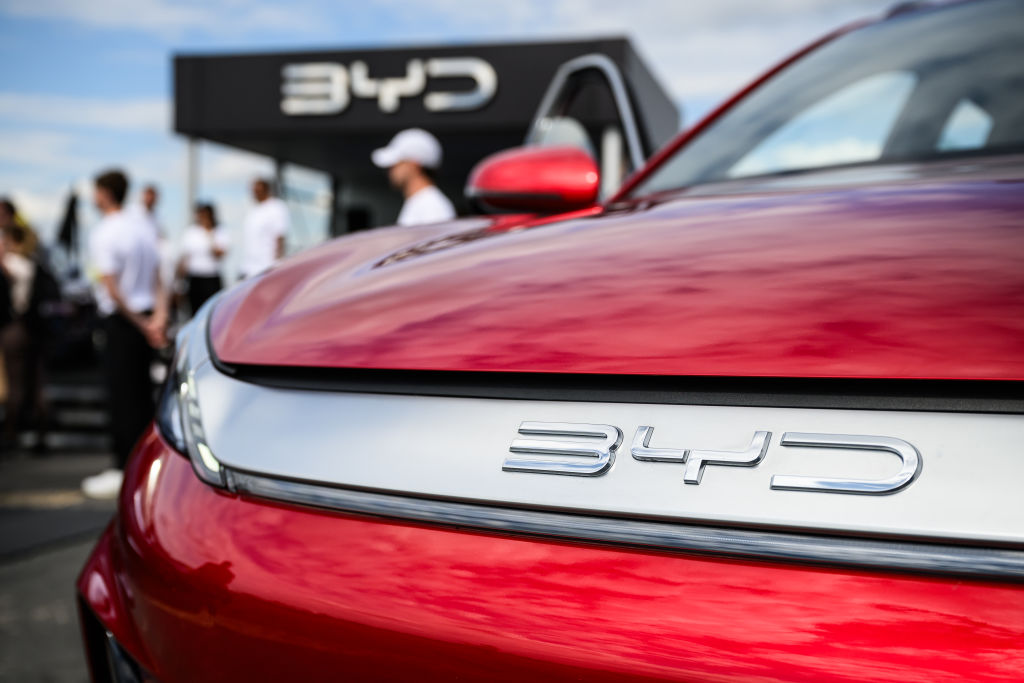
(To get this story in your inbox, subscribe to the TIME CO2 Leadership Report newsletter here.)
Here in the U.S., we hear a lot about how legacy automakers are racing to catch up to Tesla and capture a piece of the growing electric vehicle market. Tesla has a head start, but GM, Ford, and Stellantis have poured billions into their respective efforts to catch up.
In the global race, however, there is another, perhaps more significant, competitor: Chinese-made EVs. Last quarter, Chinese automaker BYD surpassed Tesla as the world’s biggest producer of EVs. And a handful of other Chinese EV makers are planning to rapidly expand in the European market with much cheaper offerings than their European and American competitors. If you look closely, you yourself may have already encountered one. Last year in Mexico City, I was surprised to have a BYD vehicle show when I called an Uber. And BYD electric buses have been driving around the U.S. for years.
The significance of the rise in the Chinese auto industry as part and parcel of the energy transition is hard to understate. Building cars and trucks occupies an important role in American and European economies—and selling them abroad represents a significant export. The value of U.S. car exports totals about $55 billion. The figure is even higher in the European Union: around $174 billion in 2022 at today’s exchange rate. As EVs become a more popular choice, Chinese automakers are bound to increase their market share and chip away at the value of western exports, especially in emerging markets where consumers will need cheaper options.
This isn’t just a macroeconomic and geopolitical question. At a company by company level, automakers see the threat. “We see the Chinese as the main competitor, not GM or Toyota,” said Ford CEO Jim Farley last year.
Chinese electric vehicles are on the rise in part because of strategic decisions made more than a decade ago—both within companies and at the national level—to develop the capacity to manufacture clean technology. In 2009, in the wake of the global financial crisis, China launched a number of subsidy programs to advance clean technology, including electric vehicles. The U.S. also launched investment programs to advance clean energy around that time, but China’s were bigger and lasted longer. Estimates vary, but various analyses agree that the total value of the Chinese government’s EV subsidies between 2009 and 2022 (the year the U.S. passed the Inflation Reduction Act) measured in the tens of billions of dollars, if not more.
That investment has put Chinese clean technology companies in a place to internationalize. Indeed, today Chinese companies have also taken a lead in the manufacturing of a range of clean energy technologies, from solar panels to lithium-ion batteries, leaving American companies behind.
There is a lesson here for companies in other sectors beyond energy and automotive: ignore the energy transition at your own risk. Demand for clean technologies is poised to shape a range of products and services, and first movers will be rewarded.
More Must-Reads from TIME
- Cybersecurity Experts Are Sounding the Alarm on DOGE
- Meet the 2025 Women of the Year
- The Harsh Truth About Disability Inclusion
- Why Do More Young Adults Have Cancer?
- Colman Domingo Leads With Radical Love
- How to Get Better at Doing Things Alone
- Michelle Zauner Stares Down the Darkness
Write to Justin Worland at justin.worland@time.com